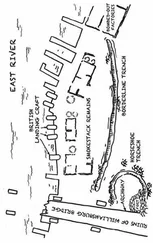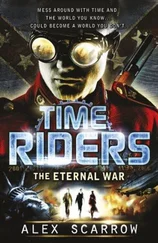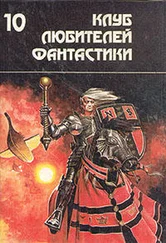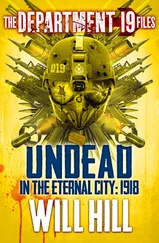Ito listened silently to my explanation. He gave his head a small shake, as if attempting to call up old memories. Then he looked up at the ceiling, thinking of where to start.
I spoke first: “Sir, I heard that my grandfather was a cowardly pilot.”
Ito gave me a puzzled look. “Cowardly? Miyabe?” he repeated the word as a question. Yet he didn’t refute it. Then he looked up, seemingly a bit lost in thought. “Well, to be sure, I don’t think that Miyabe was a particularly heroic pilot. But he definitely was an excellent one.”
___
As I told you over the phone, I don’t have many memories of Miyabe. Of course, I did converse with him. But it was over sixty years ago, and it’s not easy to recall every little thing.
I fought alongside Miyabe for over half a year, from the attack on Pearl Harbor to the Battle of Midway. We were both crewmembers on the carrier Akagi.
Short for “aircraft carrier,” a carrier is a warship loaded with planes. A small airstrip spans the length of the ship so planes can take off and land. The Akagi was the strongest warship of the Greater East Asian War.
After graduating from higher primary school, I enrolled in the Naval Preparatory Flight Training Program. I had grown up seeing the Iwakuni Naval Air Unit’s planes near my childhood home and longed to become a pilot. I was a military brat of sorts. At the time the preparatory flight training program was very popular and the acceptance rate was about one out of a hundred. I jumped for joy when they took me. My program was distinct from the pilot-in-training course. The prep program’s graduates entered the Navy as pilots, whereas the pilot-in-training course recruited sailors and turned them into pilots. Miyabe was a graduate of the latter.
After completing flight training I was ordered to the Yokosuka Naval Air Corps. I was with them for over two years before joining the crew of the Akagi in the spring of 1941. It was there that I flew the new state-of-the-art fighter. Yes, the Zero. We generally called it “the new-model fighter” or the reisen (Zero fighter).
Why was it called the reisen, you ask?
The nickname comes from the last digit of the Imperial Year 2600, when it formally entered service. Imperial Year 2600 was 1940. Nobody uses the Imperial calendar these days. Similarly, the Navy Type 99 carrier-based bomber was introduced the year before, in Imperial Year 2599. And two years prior, Imperial Year 2597, saw the introduction of the Type 97 carrier-based attacker. All three of these planes played major roles in the attack on Pearl Harbor. The Zero’s official name was the Mitsubishi Type Zero Carrier-Based Fighter Plane.
The Zero was an incredible aircraft. Its combat performance was a full cut above the rest. Most impressive were its turning and looping abilities. It had a very small turning radius. That’s why it was unbeatable in a dogfight. It was also very fast. In the early days of the war at least, I think it was probably the fastest aircraft in the world. In essence, it had both speed and maneuverability.
Typically, those two factors ran counter to each other. If too much emphasis was placed on combat performance, an aircraft’s speed would drop. And if speed was the focus, then combat performance would suffer. But the Zero was a magical plane that somehow managed to excel in both areas. They say it was made possible thanks to the blood and sweat of two passionate young engineers, Jiro Horikoshi and Yoshitoshi Sone.
In addition to the standard 7.7-mm machine guns it was armed with powerful 20-mm cannons. The 7.7-mm guns could only put holes in airplanes, but the cannons were loaded with shells that exploded upon contact. You could blow apart an enemy plane with one shot. The cannons’ slow muzzle velocity and low-capacity magazine were their weaknesses, though.
But the Zero’s truly formidable weapon was its incredible cruising range. It could easily cover 3,000 kilometers. Most single-seat fighters at the time had a range of only a few hundred kilometers, so surely you can see how overwhelming a 3,000-kilometer range was in comparison.
This is a digression, but in the end, Germany was unable to defeat England. That’s because the Germans had a weak navy. They made up for it by bombing England in the Battle of Britain. Nearly every day, German bombers crossed the Straits of Dover to assault England, but the Royal Air Force waged an all-out counterattack and eventually forced the Luftwaffe to abandon their air raids.
The Luftwaffe was defeated by the RAF because its bombers weren’t sufficiently protected by fighter planes. Laden with heavy explosives, bombers lack both speed and agility, rendering them helpless against nimble fighters. That’s why bombers need escorts, but the Luftwaffe’s fighter planes weren’t quite up to the task.
The Germans had an excellent fighter plane in the Messerschmitt, but it had a fatal flaw: a very short flight range, which meant it could only spend a few minutes fighting in British airspace. If a dogfight dragged out for too long, it was unable to get back across the Strait of Dover and plunged into the sea. Struggling to complete a round-trip crossing of a mere forty-kilometer strait…
In comparison, a Zero could have fought in the skies above London for over an hour and established total air supremacy. It’s an absurd supposition, but if the Germans had had Zeros, England would have suffered terribly.
The Zero was designed to have such a long flight range because it was a requirement for a fighter that had to do battle above the vast Pacific Ocean. An emergency landing on water meant death, which is why the Zero had to be able to fly continuously for 3,000 kilometers. Battles over China’s immense landmass was also part of the picture. An emergency landing there meant death just like on the ocean.
Warriors of old used to say that a fine horse can gallop a thousand miles out and back home again. The Zero was indeed a fine horse. It was an unparalleled fighter that combined the virtues of superior combat performance, speed, and an incredible flight range. And the most surprising aspect was that the Zeros were not land-based fighters but rather could take off from and land on narrow carrier decks.
Back then, Japan’s industrial capability was considered much inferior to that of the West, yet out of nowhere it produced a fighter that set a new world standard. This is something that Japanese should really be proud of.
Experiencing war is certainly nothing to brag about. But even now, rushing about in the great skies in a Zero is one of my proudest achievements. I’ll be eighty-five this year. In the span of such a long life, the time I spent piloting a Zero, not even two full years, is but a brief period. But those two years were so very fulfilling, and they’ve only taken on a greater significance in the twilight of my life.
Whoops. I got carried away a bit. There’s no point in telling such things to a young person. Even I forgot about my experiences as a fighter pilot once the war was over. It was all I could do to put food on the table, and I devoted myself to providing for my family. I really worked my tail off.
Perhaps it’s that in old age I can look back on my life and notice the brilliance of my youth. Probably when you’ve grown old, too, you’ll look back on your life and see yourself as you stand now from a totally different perspective.
Sorry, I wandered off the subject.
___
Miyabe joined the crew of the Akagi in the summer of 1941 after serving in China. Several pilots who had fought in China were transferred to the aircraft carrier around the same time.
The first thing they practiced after joining the crew was landing on the carrier deck. Unlike runways on land, it’s extremely difficult to touch down on a carrier as it pitches and rolls on the sea. It was daunting to many pilots who had never done it before.
Читать дальше

![Nick Cracknell - The Quiet Apocalypse [= Island Zero]](/books/28041/nick-cracknell-the-quiet-apocalypse-island-zero-thumb.webp)










